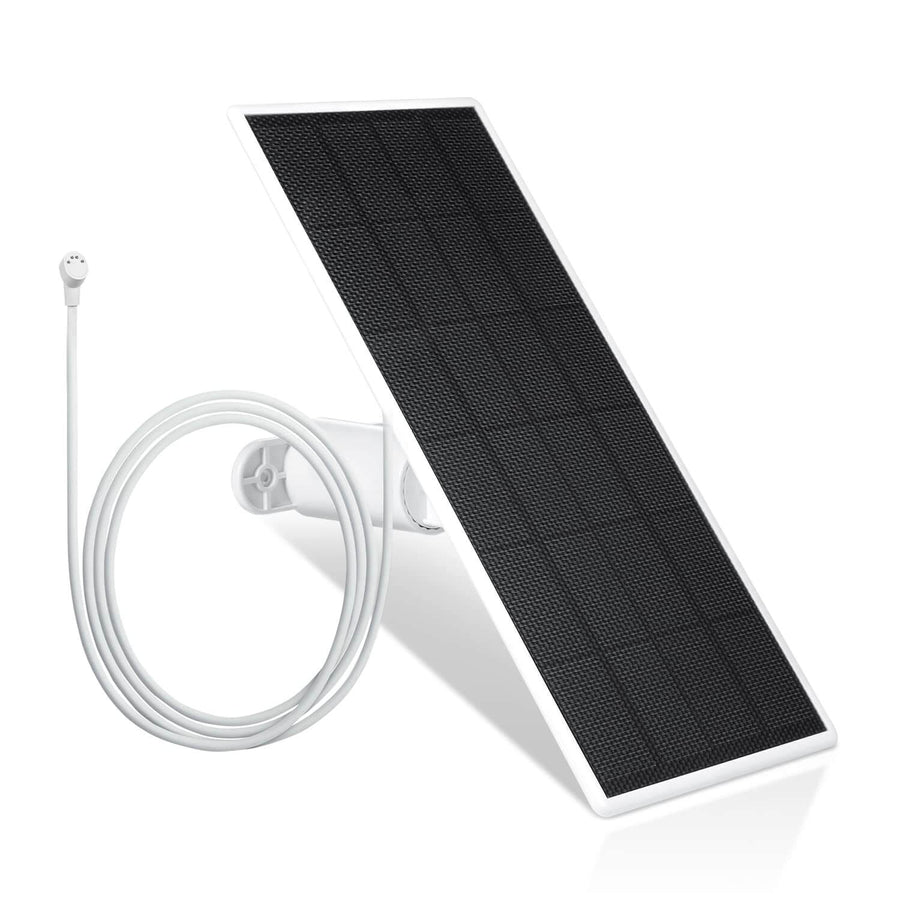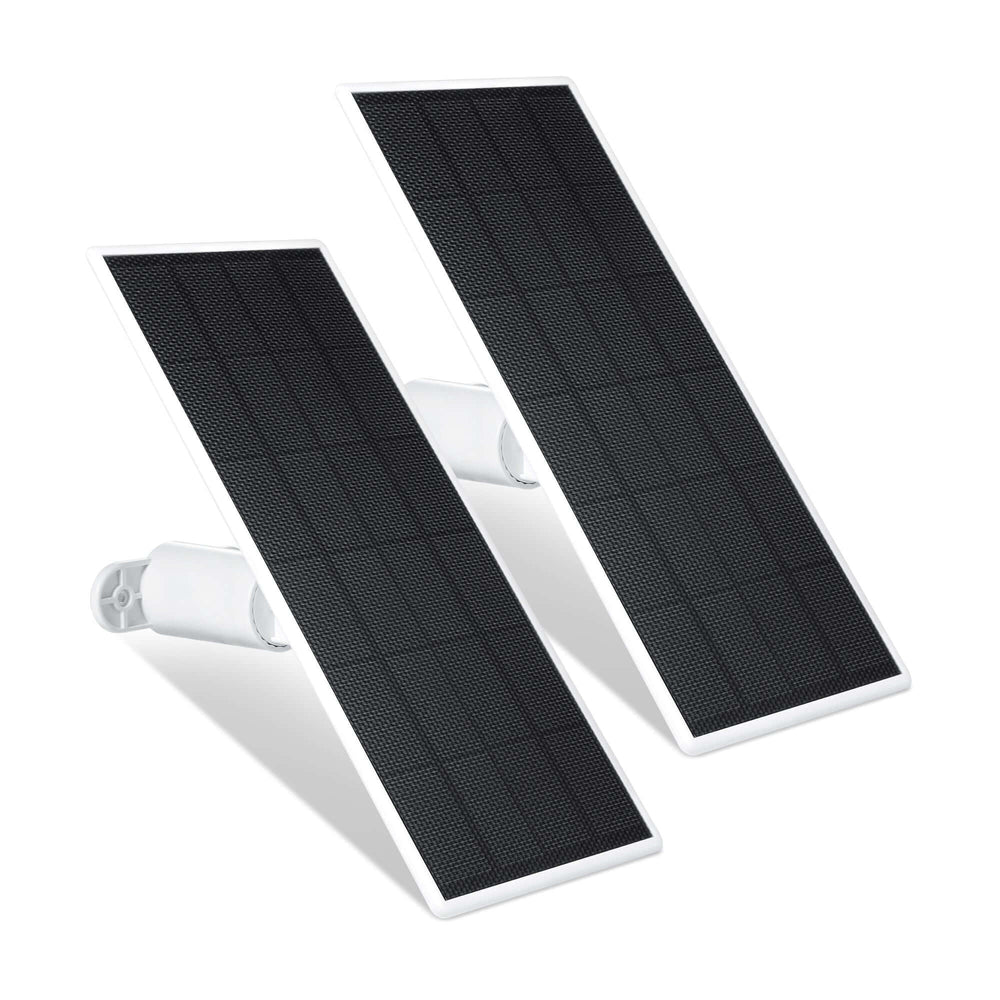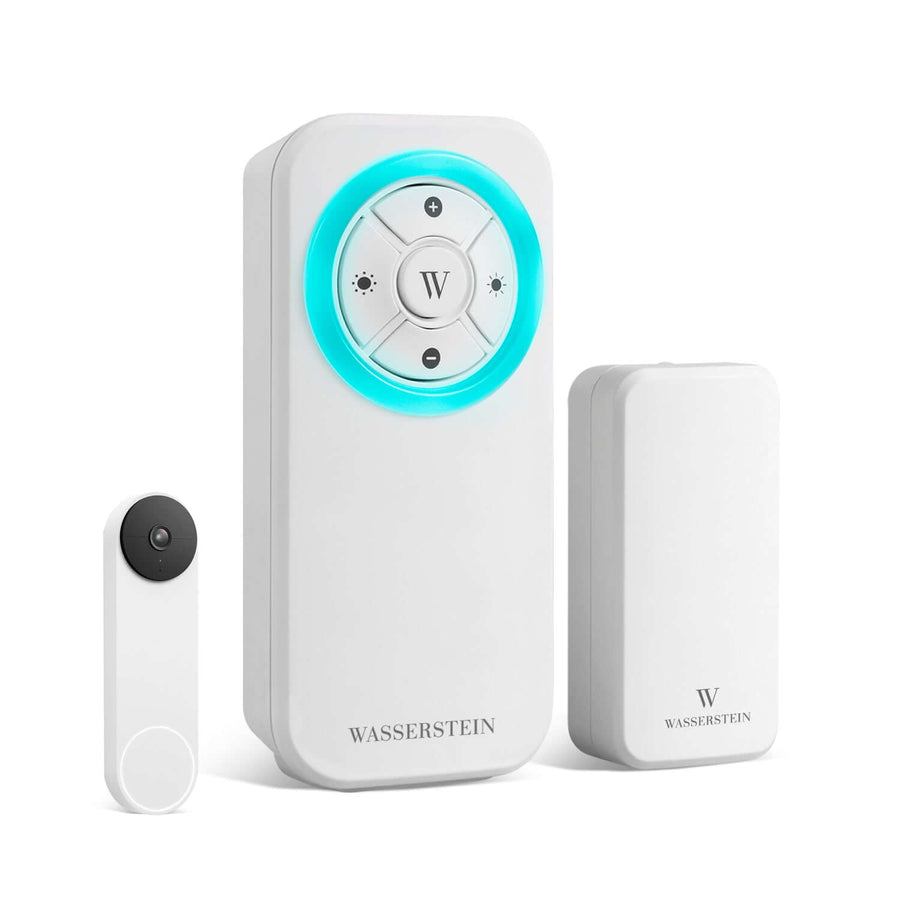NVR vs. DVR: Which Security System is Right for You?
Security camera systems have become an essential part of safeguarding homes and businesses alike. With rising concerns about property crimes and the increasing availability of affordable technology, more people than ever are investing in smart surveillance solutions to enhance their video security. Choosing the right recording technology—whether a DVR (Digital Video Recorder) or NVR (Network Video Recorder)—is a critical decision that directly impacts your system’s performance, flexibility, and cost.
Key factors like camera compatibility, video quality, storage options, and ease of installation make the decision between an NVR or DVR system especially important. In this guide, we’ll break down everything you need to know about NVR and DVR systems to help you choose the right one for your needs.
What is an NVR?

A Network Video Recorder (NVR) is a digital storage device used in modern IP camera systems to record surveillance video footage. Network video recorders operate by receiving digital audio and video data from fixed IP cameras through secure connections. Unlike a DVR (Digital Video Recorder) that relies on analog signals, an NVR captures video directly from digital sources, specifically IP (Internet Protocol) cameras. This system leverages a network to transmit, manage, and store video footage, offering superior flexibility, resolution, and integration with smart technologies.
How It Works
NVR systems operate using a computer network to connect with IP cameras, which are capable of encoding and processing video data independently. Once processed, the digital video data is streamed to the NVR over Ethernet cables (typically Cat5e or Cat6) or via wireless connections. Because the processing happens at the camera level, the NVR functions primarily as a storage and management interface, giving it the ability to handle multiple high-resolution streams simultaneously.
The NVR is typically installed on the same local network as the IP cameras and can be accessed either through a direct connection or remotely via mobile apps or web browsers, provided there is internet connectivity.
Key Advantages
- Higher Video Quality: NVR systems support IP cameras that can capture ultra-clear footage in Full HD, 4K, and higher resolutions, offering unmatched image clarity.
- Wireless Connectivity Options: With support for wireless IP cameras, NVR systems simplify installation, especially in hard-to-wire areas.
- Remote Access: These systems are designed for remote viewing and management, enabling users to monitor their camera feeds from smartphones, tablets, or computers, from anywhere in the world.
- Advanced AI Features: NVR systems frequently support cutting-edge features such as intelligent motion detection, facial recognition, people counting, and vehicle detection, making them ideal for smart surveillance setups.
- Audio Recording: NVR systems can record audio from cameras equipped with microphones, leveraging Ethernet cables for audio transmission.
👉 Explore compatible smart cameras at Wasserstein Home
What is a DVR?

A Digital Video Recorder (DVR) is a type of security camera recorder used in traditional analog surveillance systems. DVR systems capture video feeds from analog security cameras, process raw video data into a digital format, and stores them for later viewing. DVR security systems have been a reliable and widely used video surveillance solution for many years, especially in setups where coaxial cabling is already installed or preferred.
How It Works
DVR systems use analog cameras that transmit analog video signals through coaxial cables to the DVR camera recorder. Inside the DVR, a hardware component known as an analog-to-digital encoder processes and compresses the raw video data, converting it into a digital video stream that can be stored on an internal hard drive.
Power is typically supplied to each analog camera using a separate cable or a Siamese cable that combines video and power in one line. DVR recorders often come with multiple video input ports, each dedicated to a specific camera. Because DVR systems process all video centrally at the recorder, the video quality may be limited by the signal degradation over longer cable distances (typically beyond 300 feet).
Key Advantages
- More Affordable: DVR systems usually have a lower initial cost than NVR systems, making them appealing to budget-conscious consumers and small businesses. However, they can’t transmit audio unless the camera recorder has audio input ports.
- Compatibility with Existing Systems: DVRs are ideal for users with existing analog CCTV cameras and coaxial cabling, as they allow the reuse of current infrastructure without major upgrades.
- Cost-Effectiveness and Compatibility of CCTV DVR Systems: CCTV DVR systems are not only cost-effective but also compatible with various camera brands, making them a versatile choice for users with existing analog setups. They provide a practical solution for environments where live monitoring and footage analysis are essential.
- Reliable Wired Connection: The use of coaxial cables ensures a direct and interference-free connection between the cameras and the DVR, reducing reliance on internet connectivity or network strength.
- Ease of Use: DVR systems are generally plug-and-play, with straightforward setup processes that appeal to users without technical expertise.
While DVR systems lack some of the flexibility and advanced features of NVR systems, they continue to be a practical solution for basic surveillance needs. They are particularly useful for users seeking a simple, stable, and cost-effective way to monitor and store video footage from multiple cameras.
Key Differences Between NVR and DVR
Choosing between an NVR or DVR system goes beyond just deciding how video is recorded; it involves understanding the full architecture, installation requirements, and long-term capabilities of each system. These differences are critical to consider when designing a security setup that is scalable, efficient, and tailored to your unique needs. NVR systems connect both power and camera networks through a single Ethernet cable, simplifying installation and enhancing operational efficiency.
NVR (Network Video Recorder) systems and DVR (Digital Video Recorder) systems diverge in several key areas, from the types of cameras they support to how video data is processed, stored, and accessed. The following breakdown highlights the most essential differences to help guide your decision-making process.
👉 Learn more about different camera types in our Types of Security Cameras guide
Camera Compatibility

- NVR Systems: Designed exclusively for IP (Internet Protocol) cameras that process and transmit digital video and audio data over a network. These cameras often support smart features such as facial recognition, motion detection, and real-time alerts.
- DVR Systems: Built for analog security cameras that send raw video signals to the DVR recorder via coaxial cables. They are suitable for users who are upgrading an existing analog CCTV infrastructure.
Installation

- NVR Systems: Utilize Ethernet cables (e.g., Cat5e or Cat6) that can provide both power and data transmission via Power over Ethernet (PoE). This setup allows for the installation of only one cable, simplifying the transmission of power, audio, and video to each camera, thereby enhancing ease of use and installation efficiency. Many NVR systems also support wireless security cameras, making installation easier, especially in challenging locations.
- DVR Systems: Require coaxial cables for transmitting video and separate cables or Siamese cables for power. Coaxial cabling is thicker and harder to manage, often requiring more planning and effort during installation.
👉 For installation tips, check out our Outdoor Security Camera Installation Guide and browse Outdoor Battery Cameras
Video Quality

- NVR Systems: Capable of supporting full HD, 4K, or higher resolutions thanks to the use of digital transmission without compromising video quality. Footage tends to be crisper, with better color accuracy and more detail.
- DVR Systems: Typically support lower resolutions, although modern hybrid DVRs may allow for HD analog formats. Still, analog video generally cannot match the clarity of IP video.
Storage Method
- NVR Systems: An NVR recorder uses a centralized or network-based storage. Video is often stored on large-capacity internal drives or network-attached storage (NAS), making it easier to scale up and manage across multiple locations. Network switches can enhance video transmission quality in NVR systems by allowing multiple IP cameras to connect over extended distances without signal deterioration.
- DVR Systems: Store footage on local hard drives within the DVR unit. These systems are generally limited in scalability and require manual management when upgrading storage capacity.
Cost Differences
- NVR Systems: Have a higher upfront cost due to the advanced technology of IP cameras and network components. However, they offer long-term savings through better scalability, efficiency, and fewer cabling requirements.
- DVR Systems: Offer a budget-friendly option, especially for users with existing analog cameras and coaxial wiring. They are a good choice for small businesses or home users with modest surveillance needs.
Which System is Best for You?
Choosing between NVR and DVR systems isn’t a one-size-fits-all decision. The best solution depends on your property size, existing infrastructure, required features, and budget. If you already have an existing security system wired for coaxial cable, opting for a DVR system may be a practical choice. Below we’ll explore which system works best in common scenarios to help you make the right choice.
For Homes
-
NVR: Perfect for homeowners who want a modern, flexible, and future-proof surveillance system. If you’re installing cameras for the first time, NVRs provide superior image quality, app-based control, and seamless integration with smart home devices. Wireless IP cameras are easy to set up, especially in multi-story homes or areas without existing wiring. However, a wireless connection might put your network security at risk, exposing your security system to hackers.

- DVR: A solid choice if you’re upgrading an existing analog system or don’t need advanced features. DVRs are cost-effective, easy to set up, and provide reliable performance for basic security monitoring. They're especially practical in homes that already have coaxial cable installed.
👉 Learn what to look for in a home setup: Home Security Camera System Features and Tips
For Businesses
- NVR: Offers scalability, high-resolution footage, remote access, and intelligent video analytics. Ideal for growing businesses, retail chains, and offices that require smart monitoring features like facial recognition, people counting, or motion alerts. NVR camera systems are particularly beneficial for newer buildings and scenarios requiring high-resolution footage. With PoE support and network storage options, managing a large camera system becomes more efficient.
- DVR: A dependable low-cost solution for small or budget-conscious businesses. DVRs provide adequate coverage for limited spaces such as convenience stores, small offices, or storage facilities. They’re simple to operate and maintain, especially for on-site security teams.
For Large Properties
- NVR: Strongly recommended due to their ability to support multiple high-resolution cameras spread over vast areas. NVR camera system excels in remote monitoring, long-distance camera placement (thanks to Ethernet/fiber optic capabilities), and cloud or NAS storage. They're ideal for campuses, warehouses, estates, and industrial sites.
- DVR: May not be suitable for large-scale installations unless coaxial infrastructure is already in place. Limited cable length and resolution can become bottlenecks in large environments.
In general, NVR systems are better suited for users who want advanced features, scalability, and superior video performance, while DVR systems serve those looking for affordability and simplicity in a wired environment.
Common Misconceptions About NVR and DVR
Despite the widespread use of security camera systems, many myths persist about NVR and DVR technologies. Misconceptions can lead users to overlook cost-effective or ideal solutions for their specific needs. Let’s clarify some of the most common misunderstandings:
"DVR is outdated"
DVR systems may be based on older technology, but they continue to evolve. Many newer DVR camera recorders now support HD-over-coax formats, known as hybrid DVRs, which can handle high-definition video and even audio streams through improved coaxial cable technologies. This makes DVR systems still very viable, especially in environments where analog security cameras and coaxial cabling are already installed. Additionally, DVR systems remain relevant with analog cameras installed in strategic positions, connecting to a DVR system through coaxial cables.
"NVR is always wireless"
While the NVR security system is compatible with wireless IP cameras, the term "wireless" can be misleading. Most NVR setups use Ethernet cables with Power over Ethernet (PoE) to power and transmit video data from IP cameras. Fully wireless systems do exist, but they typically rely on stable Wi-Fi networks and battery-powered cameras, which may not be ideal for every scenario, especially in commercial or high-security environments.
"DVR cannot support HD video"
This used to be true in the early days of DVRs, but not anymore. Thanks to advancements in analog video standards such as HD-TVI, HD-CVI, and AHD, DVR digital video recorders can now support 720p, 1080p, and even 4K resolution on coaxial cables. These systems convert the analog signal into digital format, allowing for high-definition recording and playback. These hybrid DVR systems bridge the gap between older analog technology and modern HD performance.
"NVR systems are harder to install"
Although NVRs involve network configuration and IP camera setup, the actual installation process is often simpler due to the use of Ethernet cables for both power and data. In fact, many NVR systems offer plug-and-play PoE functionality, which reduces the need for complex wiring or additional power supplies. This makes NVRs surprisingly accessible, even for DIY installations.
"You need an internet connection for either system to work"
Both DVR and NVR systems can function perfectly without internet connectivity. The internet is only necessary if you want to enable features like remote viewing, push notifications, or cloud backups. Local storage and monitoring will still work offline, as long as the camera system is powered and properly configured.
Conclusion
Choosing between an NVR or DVR system boils down to your unique needs, preferences, and existing infrastructure. If you prioritize modern features, scalability, and superior video quality, NVR systems offer unmatched advantages. On the other hand, DVR systems remain a cost-effective and dependable solution, particularly for those with existing analog setups or simpler security needs.
FAQ
Is NVR better than DVR?
Yes, generally NVR systems provide higher video quality, better scalability, and more advanced features. However, DVR systems are still viable for basic needs or tight budgets.
Can I use an NVR with analog cameras?
No. NVRs require IP cameras. If you want to use analog cameras with network-based features, you’d need a hybrid system or a video encoder.
Does DVR require an internet connection?
Not necessarily. DVR systems operate independently of internet connectivity, but you’ll need a connection for remote viewing.
How much storage do I need for my security system?
It depends on the number of cameras, resolution, and retention period. Most systems offer 1TB to 4TB, with options for expansion.
Can I access my NVR or DVR remotely?
NVRs typically support remote viewing via mobile apps. Some modern DVRs also offer remote access if connected to the internet.
How long can NVR and DVR systems store footage?
Storage time depends on drive capacity and recording settings. Most systems can store between 7-30 days of footage, with overwrite settings enabled.








Leave a comment